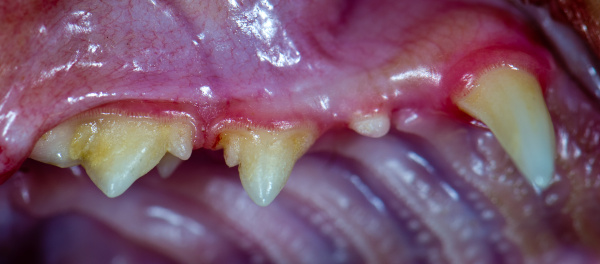If you were able to look at your cat’s mouth, inspecting their teeth and gums, what would you see? Would your cat’s teeth be pearly white and their gums a healthy pink? Or does your cat have hardened plaque and red, angry-looking gums? If you find your cat in the second description, do not beat yourself up. Many cat owners have no idea what their cat’s mouth looks like. But, if your cat falls into the category of a not-so-healthy-looking mouth, there is a chance they may be headed towards having stomatitis if they don’t have it already.
What is Stomatitis in Cats?
Stomatitis is similar to gingivitis, inflammation of the gums, however, the inflammation associated with stomatitis goes further than affecting just the gingiva. Stomatitis can also cause the tongue, lips, gingiva, and even back of the throat to become inflamed and irritated. We still aren’t totally sure what causes stomatitis, some believe it is a genetic disease and others believe it’s the tissue in the cat’s mouth overreacting to the bacteria in the tarter building on teeth. Either way, it is an infection and needs to be taken care of.

Symptoms of Stomatitis in Cats
Cats with stomatitis will have a poor appetite and have difficulty chewing their kibble. They may even stop eating entirely because of the pain. Weight loss is a symptom of this. Cats with stomatitis may act painful and not want their face touched. They may hide and become lethargic because they do not feel well. Their gums and possibly even lips will appear red and inflamed, especially near the teeth. Their tongue may appear to have ulcers.
Treatment
If you are observing your cat with any symptoms of stomatitis, call your veterinarian and schedule an appointment. The first step will be an examination. If your veterinarian diagnosis stomatitis, they will want to perform a dental procedure on your cat. Depending on the severity, your veterinarian may want to prescribe antibiotics and pain control medication before the procedure.
For this, cats are placed under general anesthesia, just as you were if you had an appendix removed. Bloodwork will need to be performed prior to the procedure to ensure your cat can metabolize the anesthesia, medications, and ensure there is no other underlying infection.
Once everything is clear, the procedure will start by scaling your cat’s teeth, just like when you have a dental cleaning done. Their teeth are then polished and the gums are probed for pocketing and lesions on the teeth. Dental radiographs should be taken to look at the roots of the teeth. If the infection has reached under the gums to the roots, extractions will be required. Don’t worry, a nerve block is injected to help with pain, just like Novocaine.
After the procedure, antibiotics, pain relief, and anti-inflammatories are prescribed to the cat. It is important antibiotics are given as directed. If multiple extractions were required, expect to feed softened food until the extraction sites have healed.
Prevention of Stomatitis in Cats
You can help your cat from being diagnosed with stomatitis by keeping up with routine dental care and brushing teeth at home. Continue with regular check-ups with your veterinarian and keep an eye on your cat’s mouth at home. Look for the signs that something is wrong like inappetence.
Do you keep an eye on your cat’s dental hygiene? If not, you should!
Source [1]







